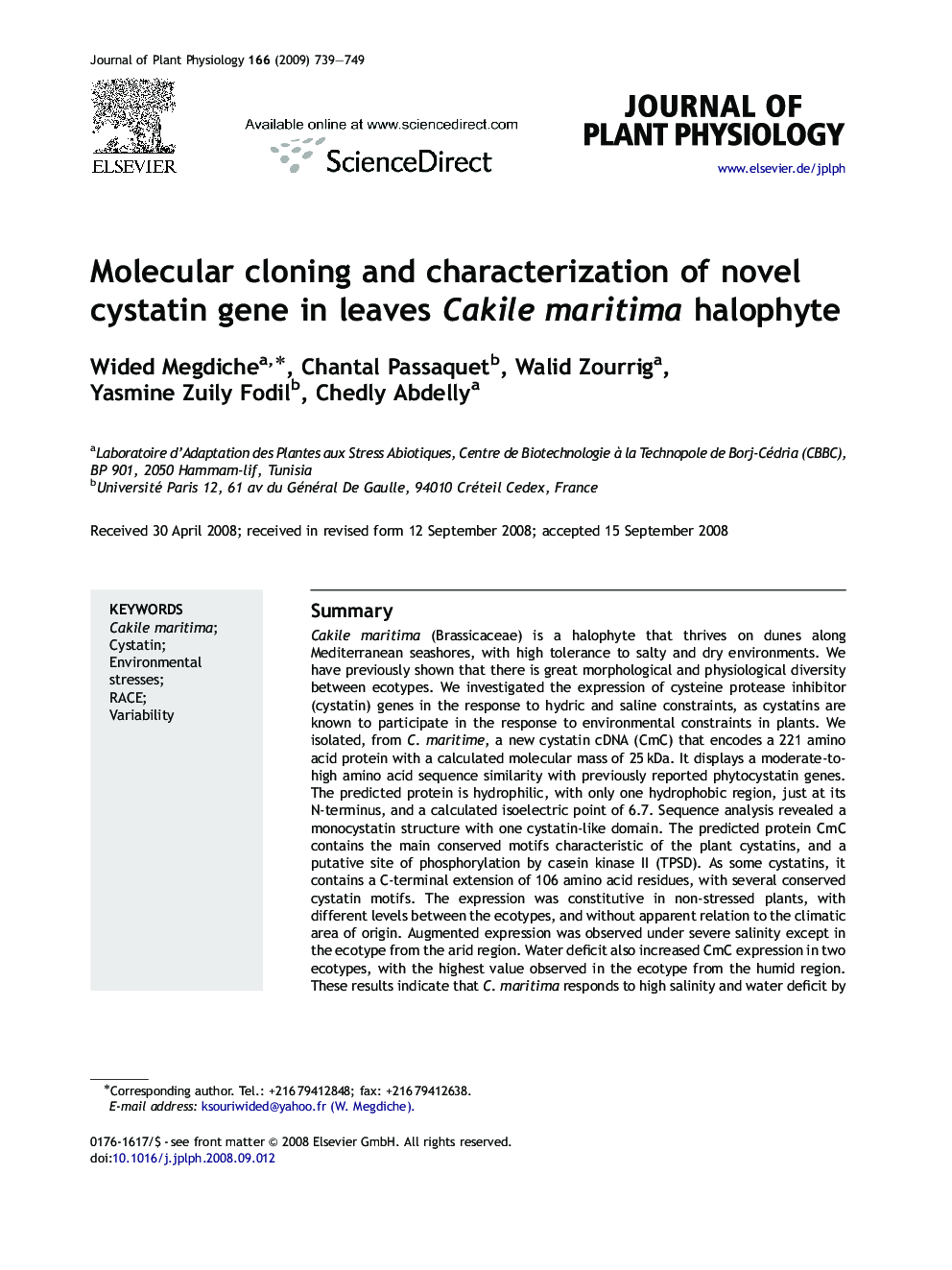| Article ID | Journal | Published Year | Pages | File Type |
|---|---|---|---|---|
| 2057245 | Journal of Plant Physiology | 2009 | 11 Pages |
SummaryCakile maritima (Brassicaceae) is a halophyte that thrives on dunes along Mediterranean seashores, with high tolerance to salty and dry environments. We have previously shown that there is great morphological and physiological diversity between ecotypes. We investigated the expression of cysteine protease inhibitor (cystatin) genes in the response to hydric and saline constraints, as cystatins are known to participate in the response to environmental constraints in plants. We isolated, from C. maritime, a new cystatin cDNA (CmC) that encodes a 221 amino acid protein with a calculated molecular mass of 25 kDa. It displays a moderate-to-high amino acid sequence similarity with previously reported phytocystatin genes. The predicted protein is hydrophilic, with only one hydrophobic region, just at its N-terminus, and a calculated isoelectric point of 6.7. Sequence analysis revealed a monocystatin structure with one cystatin-like domain. The predicted protein CmC contains the main conserved motifs characteristic of the plant cystatins, and a putative site of phosphorylation by casein kinase II (TPSD). As some cystatins, it contains a C-terminal extension of 106 amino acid residues, with several conserved cystatin motifs. The expression was constitutive in non-stressed plants, with different levels between the ecotypes, and without apparent relation to the climatic area of origin. Augmented expression was observed under severe salinity except in the ecotype from the arid region. Water deficit also increased CmC expression in two ecotypes, with the highest value observed in the ecotype from the humid region. These results indicate that C. maritima responds to high salinity and water deficit by expressing a cystatin gene that is a known component of defense against abiotic constraints or biotic aggression and survival machinery.
